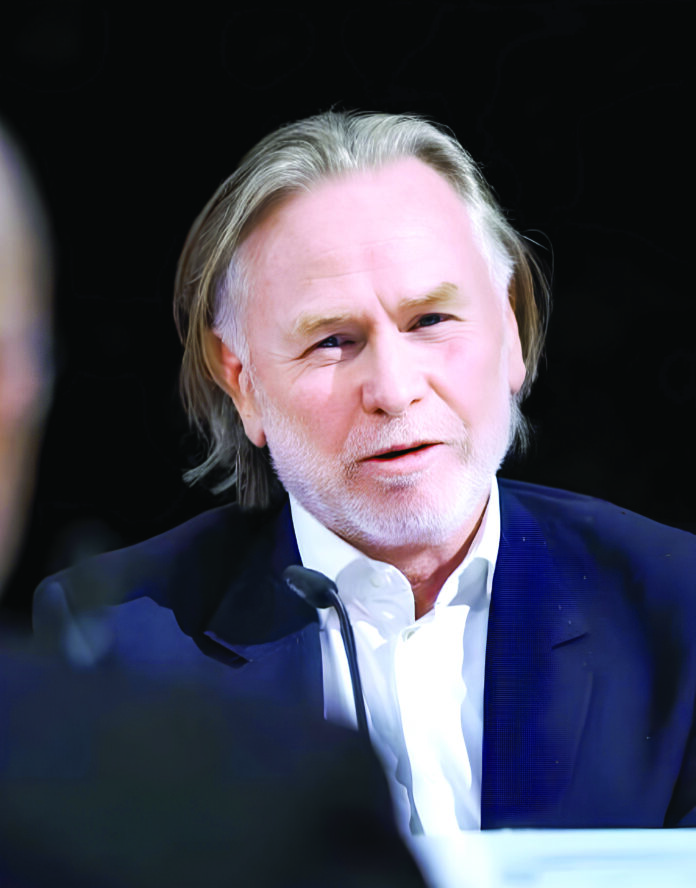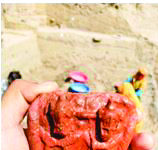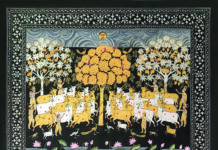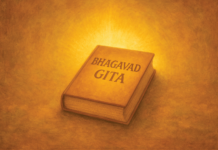The elegant gallery halls of Triveni Kala Sangam are hosting more than just an art exhibition this week—they are showcasing a diplomatic vision. On the occasion of Australia’s National Reconciliation Week, the Australian High Commission has inaugurated Yiwarra Kuju: The Canning Stock Route – Images of Aboriginal Australian Western Desert Art, an exhibition created by the National Museum of Australia, Australia’s pre-eminent social history museum, exploring land, nation and people. The focus is on Indigenous histories and cultures, histories of European settlement and people’s interaction with the environment. It is open for public viewing till 8 June.
“This exhibition isn’t just about aesthetics,” says Philip Green, the High Commissioner of Australia to India, in an exclusive interview with The Sunday Guardian. “It’s a story of family, of country, of culture—and a vital part of how Australia defines itself to the world.”
The opening of Yiwarra Kuju in Delhi symbolizes Australia’s resolute cultural diplomacy focus under Green’s stewardship, anchored in one of the oldest living civilizations on the planet. With Aboriginal cultures spanning more than 65,000 years, the High Commission is working to ensure that this deep well of heritage becomes a cornerstone of its outreach in India—a nation that itself is home to a rich tapestry of tribal traditions.
High Commissioner Green eloquently describes the Australian identity as composed of three primary threads: the Anglo-Celtic settlers like his own ancestors, Australia’s massive immigrant population and Indigenous Australians.
“The Indigenous part of our national life is not just historically significant—it’s defining,” Green emphasizes. “For us, sharing the interwoven customs, art, and resilience of our First Nations people is both a cultural and diplomatic imperative.”
The resonance with India is unmistakable. “India has its own tribal populations,” Green notes. “While the relationship isn’t one-to-one, there are striking parallels, and we have worked to foster collaborations between Indigenous Australians and Indian tribal communities.”
The Australia-India relationship has long been strong, especially through cricket and education. But in Green’s view, cultural understanding is now more vital than ever. “This year marks the fifth anniversary of our Comprehensive Strategic Partnership,” he notes. “We have grown exponentially closer on strategic and economic fronts, but we must now match that growth with deeper cultural insight.”
Australia’s efforts aim to provide a clearer sense of who they are—not just through traditional diplomacy, but through what Green calls “demonstrating who we are.” That includes showing modern Australia’s multicultural makeup, a nation of over 200 ethnic groups speaking different languages and practicing diverse religions—all coexisting harmoniously.
Just as important, says Green, is showcasing what Australia stands for. “Our Prime Minister Anthony Albanese said on election night that we stand for optimism, fairness, and inclusion. Not every government in the world these days stands for those values. We want to share that with Indian audiences.”
And cinema is one of the most exciting frontiers for this cultural engagement. “Australia and India recently signed a bilateral film co-production treaty,” Green shares. “This gives our filmmakers access to funding, support, and distribution mechanisms in each other’s markets.”
Indian-Australian cinema has already made ripples—think Anupam Sharma’s UnIndian, starring Brett Lee and Tannishtha Chatterjee. Also, Australia was also the Country of Focus at the 55th edition of the International Film Festival of India (IFFI), held in Goa in November 2024.
Now, the High Commission is eager to see that ripple become a wave. “There’s huge untapped potential here. We want to see more Indian content in Australian films, more Australian stories told in India, and most importantly, wider distribution. Film is a powerful vehicle—not just for culture, but for tourism, trade, and soft power.”
Green highlights SBS’s new series Four Years Later, which chronicles the challenges faced by an Indian couple who migrate to Australia. “It’s high-quality storytelling and a step in the right direction.” Also, works of film directors such as Baz Luhrmann (The Great Gatsby, Elvis, Moulin Rouge!), Peter Weir (Dead Poets Society, Truman Show), George Miller (Mad Max franchise), and Andrew Dominik (Blonde) are well known in India.
While art and cinema offer deep insights, nothing beats firsthand experience. Green sees tourism as a “superhighway of growth” in the Australia-India economic roadmap envisioned by Prime Minister Anthony Albanese.
“With India’s booming middle class and natural enthusiasm for travel, Australia is a unique destination,” he says. “Our wilderness, reefs, deserts—these are experiences not easily found in India.”
Tourism is being used strategically too. “We recently launched the ‘Summer of Cricket’ campaign in Mumbai with the slogan, ‘Come for the cricket, stay for the business.’ It’s about blending passion with partnership.”
Education has long been the beating heart of the India-Australia relationship, with over 120,000 Indian students currently studying Down Under. But Green also rejoices the localizing opportunity.
“India opened the door to foreign branch campuses, and the first two are both Australian: Deakin University and the University of Wollongong in GIFT City,” he reveals. This trend is accelerating. Universities from Western Australia and Western Sydney are also setting up base in India, offering students globally recognized degrees at local costs.
“We are giving families choice,” Green explains. “They can study in Australia or access the same world-class education here at home.” Additionally, more Indian students can now undertake “articulated degrees” that allow them to study partially in India and partially in Australia. And initiatives like the New Colombo Plan are encouraging young Australians to come study or intern in India.
Recognizing the pivotal role of the Indian diaspora, Australia has set up the Centre for Australia-India Relations (CAIR) in Parramatta—home to a large Indian-origin population. “This is about handing over a portion of the relationship to people who know India intimately,” says Green. “We are also offering Maitri Grants, which fund cultural, educational, and research collaborations.”.
When asked if there’s a larger strategic vision behind all these initiatives, Green demurs modestly. “We are not driven by a grand strategy. We simply want Australia to be better understood—in all its multicultural, creative, and modern dimensions,” he says.
This includes a push to rebrand modern Australia as “funky, youthful, and cool.” That’s why the High Commission recently hosted Surprise Chef, a funky ambient band from Melbourne. “They are cooler than I will ever be,” he chuckles.
Through literature festivals like Jaipur, author events, and in-conversations with figures like Charlotte Wood and Jonathan Kampfner, Green believes that showcasing Australia’s thought leadership will be another key to connecting deeply with India.
In a world increasingly defined by geopolitical shifts and strategic alliances, the Australia-India relationship is poised for an extraordinary leap. But beyond policy documents and economic agreements, it is the shared celebration of heritage, film, music, education, and people that will sustain it.
As Yiwarra Kuju invites Delhi’s audiences into the heart of the Western Desert, it also beckons India and Australia closer in spirit.
And as High Commissioner Philip Green aptly puts it, “We want to be understood not just as a partner—but as a friend who values culture, celebrates diversity, and is willing to learn and grow together.”








